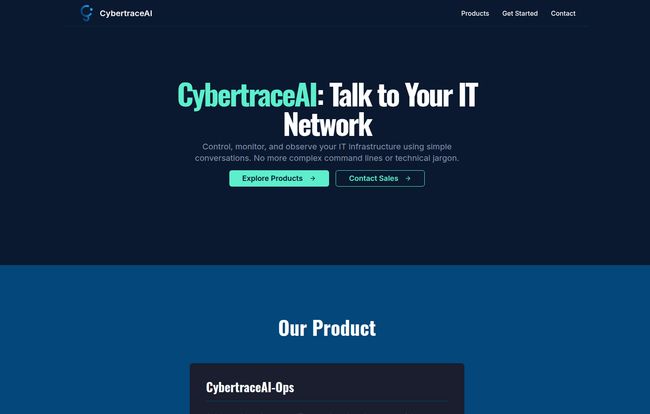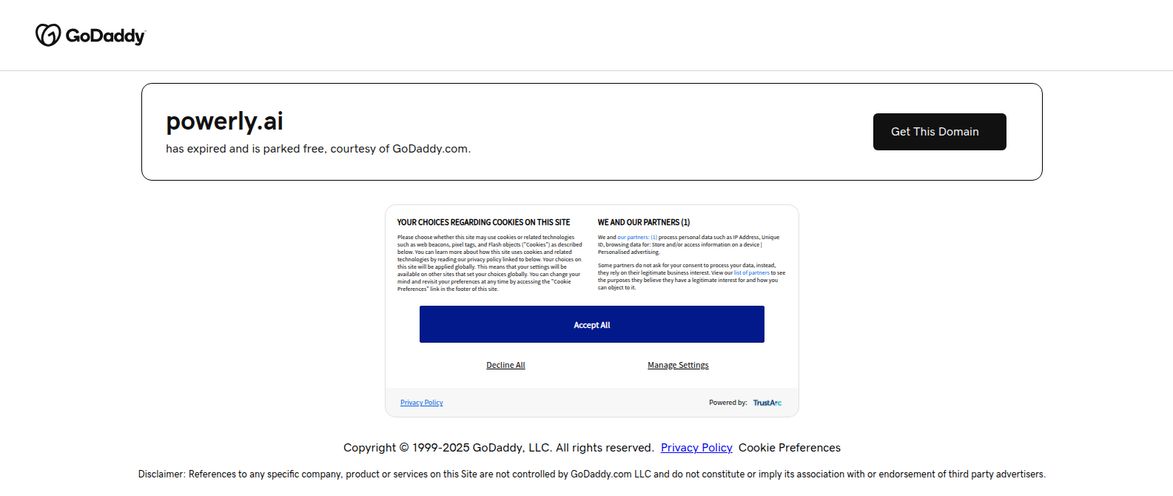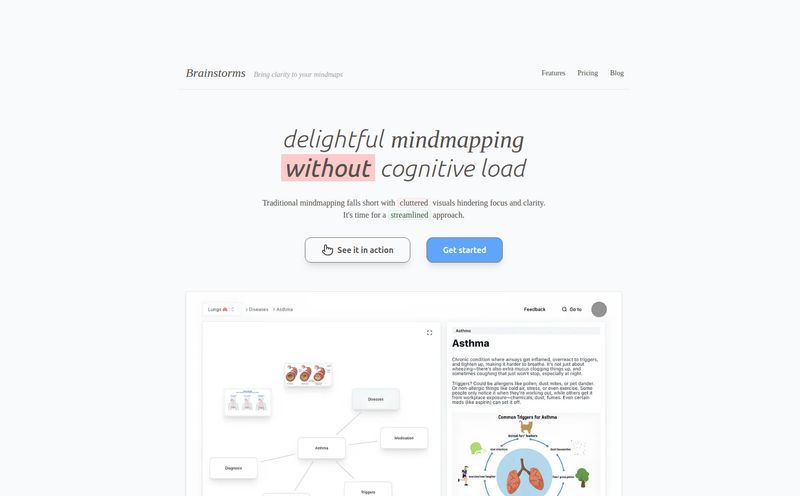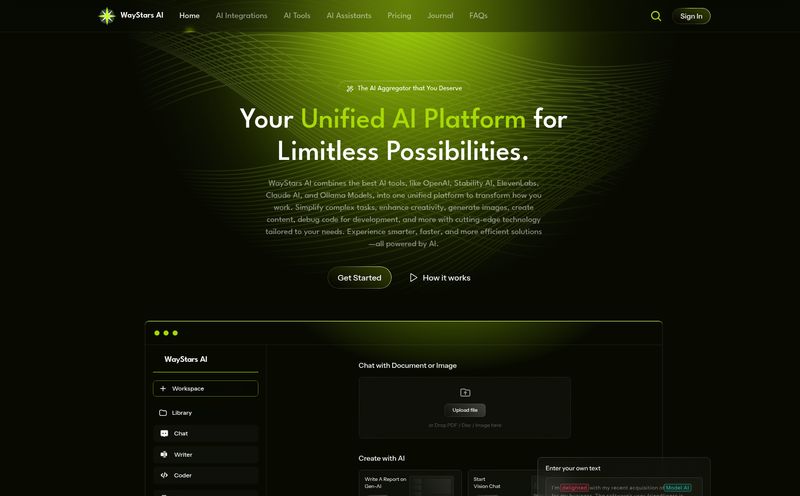Alright, let’s have a little chat. If you’ve spent any time in the trenches of IT or network operations, you know the feeling. It’s 2 AM, something’s down (it’s always 2 AM, isn’t it?), and you’re staring at a command-line interface that feels more like an ancient curse than a modern tool. You’re typing out commands that look like a cat walked across your keyboard, praying you remembered the right syntax for that one specific Cisco router model from 2012.
We’ve all been there. It’s a rite of passage. But what if it didn’t have to be? What if you could just… ask your network what’s wrong? In plain English.
That’s the promise of a new tool that recently landed on my radar: CyberTraceAI. The tagline is literally “Talk to Your IT Network.” As a seasoned SEO and traffic guy who’s had to wrestle with more than my fair share of infrastructure issues, I was instantly skeptical but also incredibly intrigued. An open-source AI agent designed to simplify all of this? Let’s see if it's just marketing fluff or the real deal.

Visit CyberTraceAI
So, What is CyberTraceAI Anyway?
At its heart, CyberTraceAI is an open-source AI agent. Think of it less like a rigid piece of software and more like a translator or a conversational partner for your IT infrastructure. Instead of needing to know the precise, arcane commands to get the information you need, you can interact with it using natural language. It’s built to understand questions like, “Are there any high-latency links right now?” or “Show me the configuration for the main firewall.”
This is a pretty big shift from the way things are traditionally done. For decades, managing networks has been a specialized skill requiring deep knowledge of vendor-specific CLIs. CyberTraceAI wants to flatten that learning curve, making network management more accessible and, frankly, less of a headache. It's designed to run on-premises, which is a huge plus for anyone (rightly) concerned about where their sensitive network data is going.
How Does This AI Magic Actually Work?
Saying “it’s AI” is easy. But how does it really function? From what I've gathered digging through their site and docs, it boils down to a few core components that work together.
The Natural Language Brain
The star of the show is obviously the natural language interface. This isn't just a simple keyword matcher. It uses more sophisticated AI models (the site mentions being powered by components like Llama 3) to understand the intent behind your question. So, when you ask, “What’s going on with the core switch?”, it knows you’re probably looking for CPU load, memory usage, and interface statuses. This is a far cry from the unforgiving nature of a CLI where `show ip interface brief` and `show ip interfaces brief` are two very different things, one of which will just get you an error message.
Real-time Insights Fueled by Telemetry
Now, for this to work, the AI needs data. A lot of it. This is where telemetry comes in. CyberTraceAI hooks into your network devices to pull real-time data—traffic flows, device health, logs, you name it. This is a crucial point: the tool is only as good as the data you feed it. So yes, there's an initial setup phase where you need to get this data flowing. Some might see this as a hurdle, but honestly, you can't manage what you can't measure. This is just making that measurement process a whole lot smarter. The result is a live, breathing overview of your network’s health, without having to manually poll a dozen different devices.
On-Premises for the Privacy-Conscious
I have to give them major points for this. In an era where every new tool seems to be a cloud-only SaaS product that wants to slurp up your data, CyberTraceAI offers an on-premises deployment. For organizations in finance, healthcare, or government—or just anyone who doesn't want their infrastructure map sitting on a third-party server—this is a non-negotiable feature. It means all your sensitive network topology, configurations, and performance data stays within your own walls. You control the box. You control the data. Big win, in my book.
Who Is This For? The Ops vs. Enterprise Breakdown
CyberTraceAI seems to be taking a two-pronged approach, which I think is smart. They offer a CybertraceAI-Ops version and an Enterprise Edition.
The Ops version is the open-source, get-your-hands-dirty edition. This is perfect for individual network engineers, small teams, or anyone running a homelab who wants to kick the tires. You can get started for free, set it up yourself, and see if it fits your workflow. This is how you build a community and get real-world feedback.
The Enterprise Edition is for the big leagues. It’s a commercial offering that comes with all the bells and whistles a large company would need: enterprise-grade customization, advanced security features, dedicated support, and consulting services. There's no public pricing, just a “Contact Sales” button. And speaking of pricing, I had a little chuckle when I tried to find a pricing page and was met with a 404 error. Hey, it happens to the best of us! It’s a subtle reminder that even companies building slick AI tools are run by real people who sometimes miss a redirect.
The Good, The Bad, and The Networky
No tool is perfect, especially not a new one. After poking around, here’s my balanced take on CyberTraceAI.
What I Really Like
The biggest pro is the sheer simplification. The idea of empowering a junior admin or even a helpdesk technician to safely query network status is genuinely powerful. It democratizes information that was previously locked behind a wall of technical jargon. The on-prem deployment model is a massive selling point for security and data governance. I also appreciate the open-source approach with the Ops version; it builds trust and allows for community-driven improvements.
Where It Could Improve
The elephant in the room right now is vendor support. The documentation and examples lean heavily on Cisco. While they say multi-vendor support is on the roadmap, if your network is a colorful mix of Juniper, Arista, and Fortinet, you might have to wait a bit for full-fledged support. This is a classic challenge for any network tool, so it’s not a deal-breaker, just a reality of its current stage. Also, as mentioned, it’s not plug-and-play. You'll need to roll up your sleeves a little to configure the telemetry data feeds. It's not a wizard-style install, and that might deter people looking for an instant fix.
My Final Verdict: Is CyberTraceAI Worth Your Time?
So, is it time to throw out your CLI cheat sheets? Not just yet. But CyberTraceAI represents a fascinating and, I believe, necessary direction for network management. The move towards conversational interfaces is happening everywhere else, from our phones to our homes, so why not in our data centers?
For a team that is heavily invested in the Cisco ecosystem, I think downloading the open-source version is a no-brainer. The potential time savings and ease-of-use are immense. You can start small, maybe just using it for monitoring and observation, and grow from there. It's a tool that feels like it was built by network people for network people, addressing a pain point that is almost universal.
Is it a fully mature, all-encompassing platform that will replace your entire suite of monitoring tools tomorrow? Probably not. It’s still new, and the vendor support needs to grow. But the foundation is incredibly solid, and the core idea is, in my opinion, the future. It’s making network management more human, and that's a trend I can definitely get behind.
Frequently Asked Questions
- Is CyberTraceAI free to use?
- Yes and no. They offer CybertraceAI-Ops, which is an open-source and free version you can deploy yourself. For larger needs, they have a paid Enterprise Edition with more features and support, which requires contacting them for a quote.
- What network hardware does CyberTraceAI support?
- Currently, its primary support is for Cisco networking devices. The company has stated that multi-vendor support is a priority and is on their development roadmap, so expect more vendors to be added over time.
- Do I need to be a coding expert to use it?
- To use it, no! The entire point is to avoid complex commands and use natural English. However, for the initial setup of the open-source version, some comfort with server administration and configuring data sources (telemetry) will be necessary.
- How does CyberTraceAI ensure data privacy?
- One of its key features is the ability to be deployed on-premises. This means the AI agent and all your sensitive network data remain within your own IT environment, not on a third-party cloud. You maintain full control over your data.
- What is telemetry and why does CyberTraceAI need it?
- Telemetry is the process of collecting data from remote or inaccessible points (in this case, your network devices) and transmitting it to a central location for monitoring and analysis. CyberTraceAI needs this stream of real-time data—like traffic stats, device health, and logs—to understand what's happening on your network and answer your questions accurately.
- Where can I get started with CyberTraceAI?
- You can head over to their official website to learn more and likely find links to their GitHub repository for the open-source CybertraceAI-Ops version. For the enterprise solution, you would use the contact form on their site.
Conclusion
Look, the daily grind of managing IT infrastructure isn't going away. But tools like CyberTraceAI are a breath of fresh air. They show a path forward that doesn’t involve memorizing thousands of command-line variations. By focusing on natural language and putting a powerful AI brain between the human and the hardware, it lowers the barrier to entry and speeds up troubleshooting. It’s still early days, and I’m eager to see how the platform evolves, especially with vendor support. But the promise is there, and it’s a compelling one: spend less time fighting with your tools and more time understanding your network.
Reference and Sources
- CyberTraceAI Official Website: https://cybertraceai.com/



